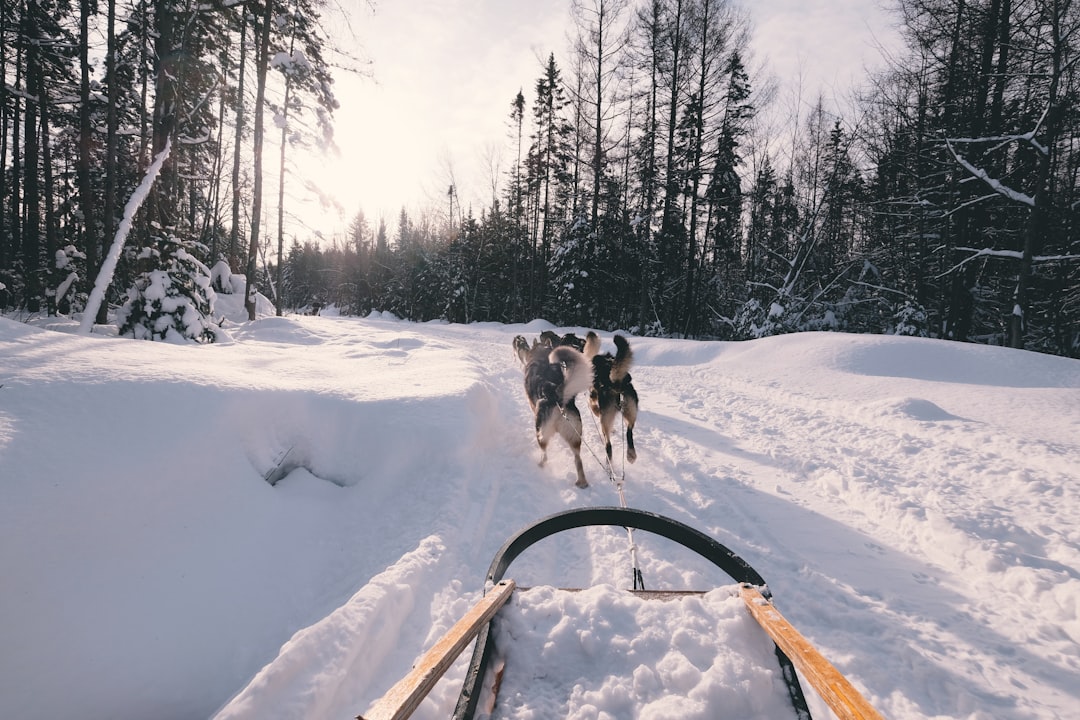Discover the evolution and historical significance of the Iditarod Race, a symbol of Alaskan heritage and sled dog culture, showcasing the endurance and spirit of mushers and their canine companions while preserving tradition and adapting to contemporary challenges.
Introduction to the Iditarod Race Evolution
The Iditarod race, deeply embedded in the fabric of Alaskan heritage, epitomizes the resilience and spirit of both Alaska and its inhabitants. Its evolution from an indispensable transportation route during the Gold Rush Era to a prestigious and globally recognized annual event is a narrative of transformation and endurance. Initially serving the practical needs of connecting mining camps and settlements, the Iditarod has transcended its utilitarian origins to become a celebration of sled dog culture and the unique challenges of the Alaskan wilderness. Today, the race stands as a monumental event that not only tests the physical and mental fortitude of the mushers and their sled dogs but also serves as a living tribute to Alaska’s history and traditions. It embodies the enduring partnership between humans and dogs, forged in the demanding conditions of the Alaskan frontier.
This extraordinary race brings together competitors from all walks of life, along with their dedicated canine teams, to partake in a journey that is as much about camaraderie and the celebration of life in the north as it is about competition. The Iditarod highlights the crucial role sled dogs have played in the development of Alaska, from providing vital transportation and communication links in the past to inspiring contemporary challenges and adventures. As the race continues to evolve, it remains a poignant reminder of the deep connections between Alaska’s people, their history, and the remarkable sled dogs that have been their partners through thick and thin.
Historical Significance of the Iditarod Trail

Today, the Iditarod National Historic Trail stands as a testament to the enduring spirit and resilience of those who navigated its challenging terrain. It preserves the rich heritage of Alaska’s indigenous populations and early settlers, who relied on the companionship and strength of sled dogs to traverse the icy expanses. The trail’s designation as part of the National Historic Trails Registry in 1978 further cemented its status as a key cultural and historical asset, ensuring that the legacy of sled dogs and their pivotal role in the development and settlement of Alaska will not be forgotten. As a living monument, the Iditarod Trail continues to inspire and educate, connecting past generations with the present, and reminding us of the enduring bond between humans and sled dogs in the face of adversity.
The Birth of Sled Dog Racing in Alaska
The early 20th century in Nome, Alaska, was a time of vibrant community engagement, especially during the long, dark winter months. Residents found joy and excitement in sled dog racing, an activity deeply rooted in the region’s culture. Among the most celebrated of these events was the All Alaska Sweepstakes, which began in 1908. This challenging 408-mile race from Nome to Candle and back became the inspiration for the modern Iditarod race. The All Alaska Sweepstakes not only tested the endurance and skill of the mushers and their sled dogs but also brought the community together, fostering a spirit of camaraderie and resilience that is still celebrated today.
In the late 1960s, the tradition of sled dog racing in Alaska was at risk of being forgotten, a concern that led Joe Redington Sr. and Dorothy Page to advocate for the creation of the Iditarod race. Their efforts were driven by a desire to preserve the sled dog culture that was integral to Alaska’s history and to honor the legacy of sled dog racing in the state. The Iditarod was not merely a commemoration of the heroic 1925 serum run to Nome but a tribute to all mushers and their sled dogs who have been part of Alaska’s story. This initiative to celebrate and preserve Alaska’s sled dog racing tradition resulted in the first Iditarod race, a significant cultural milestone that has since become an iconic event, embodying the spirit of Alaska and its people.
The Iditarod Race: Preserving Sled Dog Culture
The inception of the Iditarod Race was driven by a vital mission to preserve the rich sled dog culture deeply embedded in Alaska’s heritage, rather than merely commemorating the famous Serum Run of 1925. Joe Redington Sr., often hailed as the “Father of the Iditarod,” was instrumental in this preservation effort. His passion for sled dog culture and the historical significance of the Iditarod Trail propelled him to advocate for the trail’s designation as a National Historic Trail. Through his relentless efforts, the Iditarod Trail was officially recognized in the National Historic Trails Registry in 1978, marking a significant milestone in the campaign to preserve Alaska’s sled dog tradition. This recognition underscored the importance of sled dogs beyond their role in the Serum Run, highlighting their integral part in the fabric of Alaskan history and culture.
Furthermore, the Iditarod Race plays a crucial role in promoting the welfare and ethical treatment of sled dogs, embodying a commitment to animal care that is as enduring as the race itself. The race’s organizers have implemented stringent animal welfare standards, ensuring that the sled dogs are not only celebrated for their incredible endurance and spirit but also cared for according to the highest standards of animal welfare.
Evolution of the Iditarod Race
Since the first Iditarod race took off in 1973, the event has grown immensely, both in scale and significance. What began as a modest tribute to Alaska’s sled dog culture and the vital role of the Iditarod Trail has blossomed into an annual event that captivates and challenges participants and spectators alike. Covering nearly a thousand miles of Alaska’s most rugged and beautiful terrain, the race from Anchorage to Nome tests the endurance, skill, and bond between mushers and their sled dogs. The incorporation of different routes for odd and even years, each with its unique set of challenges and checkpoints, showcases the adaptability and resilience required to navigate Alaska’s unpredictable environments. This aspect of the race not only honors the tradition of sled dog racing but also highlights the importance of adaptability in the face of changing climates and landscapes.
Moreover, the Iditarod has become a living tribute to those who have shaped its legacy, with various trophies and awards named after key figures such as Joe Redington Sr. and Dorothy G. Page. These honors serve as a reminder of the race’s historical roots and the efforts to preserve the sled dog culture in Alaska. As the race continues to evolve, incorporating new technologies for tracking and safety, and adjusting to environmental changes, it remains a testament to the enduring spirit of the mushers and their sled dogs. The Iditarod race, through its evolution, not only pays homage to Alaska’s history and the indispensable role of sled dogs but also looks forward to ensuring the tradition thrives for generations to come.
The Role of Sled Dogs in Alaskan Communities and Beyond
Sled dogs have long been at the heart of Alaskan communities, serving as the lifeblood of connectivity and survival in the vast, often inaccessible terrains of Alaska. Before the era of aviation transformed the landscape of transportation, these resilient animals were the primary means for delivering mail, medications, and essential supplies to remote areas. Their role was so integral that the Iditarod race, a testament to endurance and perseverance, was established not just as a sporting event but as a celebration of the historical significance and contributions of sled dogs to Alaskan culture and beyond. This race serves as a living monument to the dogs and their mushers, highlighting the enduring partnership that was essential to the development and survival of Alaskan communities. Understanding and training sled dogs go beyond mere obedience; it requires a deep appreciation of their intelligence, stamina, and the unique bond they share with their mushers—elements crucial for success in challenging races like the Iditarod.
Conclusion: Embracing Tradition and Looking to the Future
The Iditarod race stands as a monumental testament to the rich tapestry of Alaskan heritage, encapsulating the spirit of adventure, resilience, and the profound bond between humans and sled dogs. This event not only pays homage to the historical significance of sled dogs in the exploration and development of Alaska but also serves as a vibrant celebration of sled dog culture, bringing together communities from around the globe. Participation in the Iditarod, whether as a musher, a volunteer, or a spectator, offers a unique opportunity to connect with this living tradition, fostering a deeper appreciation for the role of sled dogs in Alaskan history and their continued relevance today. As the race continues to evolve, it embodies the delicate balance of honoring past traditions while navigating the challenges and changes of the modern world, ensuring that the legacy of the Iditarod and the incredible feats of sled dogs and mushers remain a source of inspiration and admiration for generations to come.




